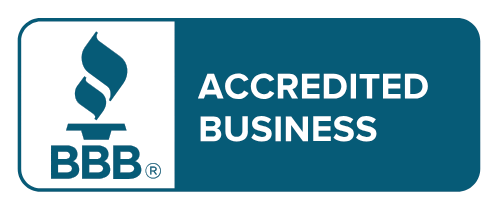Smart Home Integration: Transform Your Living Space

Smart home integration can significantly enhance your home’s functionality, convenience, and security. By seamlessly connecting various devices and systems within your home, you can manage everything from lighting to climate control with ease. For those looking into custom home building or high-end renovations, integrating smart technology can elevate your living experience.
Key Takeaway:
- Smart home integration makes your home more functional and convenient.
- It can enhance security and energy efficiency.
- Smart homes allow remote control of various systems via mobile apps.
- It is best incorporated during the custom home building or renovation process.
Understanding Smart Home Integration
What Is Smart Home Integration?
Smart home integration involves connecting various smart devices and systems within your home to work together seamlessly. This can include thermostats, lighting, security systems, and entertainment hubs. By integrating these systems, you can control them via a central platform, often through a smartphone app.
Benefits of Smart Home Integration
1. Convenience: Imagine adjusting your thermostat, lighting, and security system all from your smartphone. Smart home integration allows for remote control of various home systems, making life more convenient.
2. Energy Efficiency: Smart thermostats can learn your schedule and adjust the temperature accordingly, leading to energy savings. Lighting systems can also be programmed to turn off when rooms are not in use.
3. Enhanced Security: Integrated security systems can send real-time alerts to your phone, allowing you to monitor your home even when you're away. Cameras, motion detectors, and smart locks add layers of security.
4. Increased Home Value: Homes equipped with smart technology are more attractive to buyers, potentially increasing your home's market value.
Smart Home Devices to Consider
Smart Thermostats
Smart thermostats like the Nest Learning Thermostat or Ecobee Smart Thermostat adjust the temperature based on your habits and can be controlled remotely via your smartphone. These devices can also provide energy usage reports to help you manage your consumption.
Smart Lighting
Smart lighting systems, such as Philips Hue or LIFX, allow you to control the brightness and color of your lights through an app. You can set schedules or use motion detectors to turn lights on and off, improving both convenience and energy efficiency.
Security systems like Ring or SimpliSafe provide features such as video doorbells, security cameras, and smart locks. These systems can be monitored and controlled remotely, offering peace of mind whether at home or away.
Smart Home Assistants
Devices like Amazon Echo or Google Nest Hub serve as the central hub for your smart home. They can control various devices through voice commands and provide information ranging from weather updates to shopping lists.
Integrating Smart Technology During Home Construction
Planning Stage
Incorporating smart home technology is best done during the planning stage of custom home building or renovations. This allows for proper wiring and setup, ensuring that all systems are seamlessly integrated.
Selecting Compatible Devices
Choose devices that are compatible with each other and your central hub. Ensuring compatibility can save you from future headaches and additional expenses.
Professional Installation
For a seamless integration, consider hiring professionals to install your smart home systems. They can ensure that everything is set up correctly and provide you with a tutorial on how to use your new smart home features.
Real-Life Experiences with Smart Home Technology
Energy Efficiency with Smart Thermostats
A homeowner in Charleston, SC, integrated a Nest Learning Thermostat during their home renovation. For a year, they noticed a 15% reduction in their energy bills. The smart thermostat adjusts the temperature based on the homeowner’s schedule, optimizing energy usage.
Enhanced Security
Another client opted for a Ring security system during their custom home build. The system included video doorbells, motion sensors, and smart locks. While on vacation, the homeowner received an alert about suspicious activity. They were able to contact local authorities, preventing a possible break-in.
Tables and Lists to Enhance Understanding
Comparison of Popular Smart Thermostats
Feature Nest Learning
- Thermostat Ecobee Smart Thermostat Honeywell Home T9
- Learning Capability Yes Yes No Remote Control Yes Yes Yes
- Energy Reports Yes Yes Yes
- Voice Assistant Assistant, Ale
- Price Range $250-$300 $250-$300 $150-$200
Smart Security Systems Overview
- Feature Ring Security System
- Video Doorbell
- Smart Locks
- Monthly Subscription
- Professional Monitoring
- Mobile App Control s
- Price Range (Basic Kit) $199-$299 $200-$500 Custom Pricing
List: Steps to Integrate Smart Home Systems
- Assess Your Needs: Determine what systems and devices will benefit you the most.
- Plan Your Integration: Incorporate smart home planning during the construction or renovation phase.
- Choose Compatible Devices: Select devices that work well together and with your chosen central hub.
- Professional Installation: Hire professionals for installation to ensure a seamless setup.
- Learn How to Use Your System: Take the time to understand how to operate your new smart home features efficiently.
Custom Home Building with Smart Technology
Advantages of Building a Smart Custom Home
Building a custom home with smart technology integrated from the start ensures that all systems work seamlessly together. You can plan for optimal placement of devices and necessary wiring, making future upgrades easier.
Future-Proofing Your Home
Incorporating smart technology during the building phase can future-proof your home. As technology advances, having a robust infrastructure in place will make it easier to add new devices and systems.
Enhancing Aesthetic Appeal
Smart devices can be discreetly integrated into your home’s design, maintaining aesthetic appeal while adding functionality. For example, smart lighting can be built into architectural features, enhancing the beauty of your home.
Conclusion
Smart home integration offers numerous benefits, from enhanced convenience and security to improved energy efficiency. By incorporating smart technology during the custom home building or renovation process, you can ensure a seamless and efficient setup.
Whether you are considering a new custom home or renovating your existing property, integrating smart home technology can transform your living experience. At Hunter Baker Homes and Renovations, we specialize in incorporating the latest smart home systems to meet your needs and exceed your expectations.
For those looking to enhance their homes with the latest technology, smart home integration is a valuable investment. Contact us to learn more about how we can help you build or renovate your dream smart home.
If you have any questions or need further assistance with smart home integration, feel free to reach out to us. Your smart home journey begins with a single step, and we are here to guide you through every phase.
Remember, a smart home is not just about technology; it's about creating a living environment that offers comfort, security, and efficiency. Let's make your dream home a reality with smart home integration.






